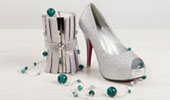When you’re breastfeeding, you are moisturizing the baby so you. Nipple dairy is focused on ninety% liquids, it is therefore key to know how far h2o for when you are breastfeeding. Experts recommend consuming on the 128 ounces (otherwise sixteen cups) away from liquid each and every day if you find yourself nursing. In the event studies have discovered that breastfeeding mothers don’t need to drink significantly more drinks than what is must satisfy its thirst.
128 ounces seems like much-16 8-ounce servings-however, 8 oz are a pretty small meal. If you take in you to 8-ounce cup off water both before and after for each feeding, also which have food, you Latin Feels e-mail-kontakt need to be in a position to hit you to 128-ounce goal. We have found a close look at just how much much h2o you should drink if you find yourself medical.
How Water Affects Milk Also have
It might seem user friendly if their milk supply begins to wane, consuming much more drinking water or any other fluids will help provide it with an improve. But not, look into the aftereffect of additional liquid towards whole milk design, have, and infant development has not found that sipping more than their typical number of drinks will increase milk have. So, there’s no benefit to taking excessively liquid when you’re medical. Merely take in adequate to remain effectively hydrated.
But bringing too little h2o can lead to one to become dried, that can negatively effect your quality of life and you can nipple milk products. It is critical to make sure you are bringing an abundance of fluids so that your body’s capable form within its optimum level.
Avoiding Dehydration
Unlike emphasizing conference a goal of an appartment count regarding oz, the primary is to make sure you usually do not feel dried. Becoming moisturized through getting a good amount of liquids or any other fluids through the a single day is vital to your health, long lasting phase from lifestyle you are in.
Aftereffects of Dehydration
If you don’t rating adequate liquid or any other liquids, your chance as dried, resulted in some offending periods, including:
- Constipation
- Dizziness
- Inactive lips and you can chapped mouth area
- Tiredness and you may deficiencies in time
- Nightmare
- Mood swings
- Strength cramps
- Sickness
The way to get Adequate Liquids
Your greatest sign regarding if you desire so much more liquids is hunger. An effective rule of thumb will be to drink sufficient water thus that you’re not dehydrated, otherwise known as “taking in order to thirst.”
Thirst is the person is way of telling you that you might want to drink far more, thus make your best effort to focus on they. Once you will be directly craving drinking water, you are currently exhausted out of water.
So it desire to drink more drinking water when you find yourself nursing are caused by oxytocin, a hormone put out throughout breastfeeding. Oxytocin definitely influences your hunger cues so you can encourage you to drink adequate liquid in order to moisturize on your own making nipple milk.
Along with of your pee try an informing idea regarding your number of moisture. If for example the urine try ebony, it’s just not being toned down sufficient regarding what your drink. Get a hold of a pale red-colored otherwise almost obvious colour and that suggests you’re going to get sufficient liquids.
All Liquids Count Towards the Moisture
Your own fluids won’t need to all are from liquids, but it is usually a good solutions. It is glucose-totally free, caffeine-100 % free, offered, and enjoy it at any temperatures. In addition to, you’ll flavor your own liquid having fruits or plant life when need a significant difference.
Having said that, people water you eat, in addition to any liquids-steeped dinners you consume, subscribe your current liquid intake. A few examples of products one donate to the fluid intake is cow’s dairy or nut whole milk, decaffeinated coffee or tea, and you can fruit or veggie juices. Edibles might help help keep you moisturized, also, such as apples, watermelon, fresh fruits, soups, cucumbers, tomatoes, and lettuce.





